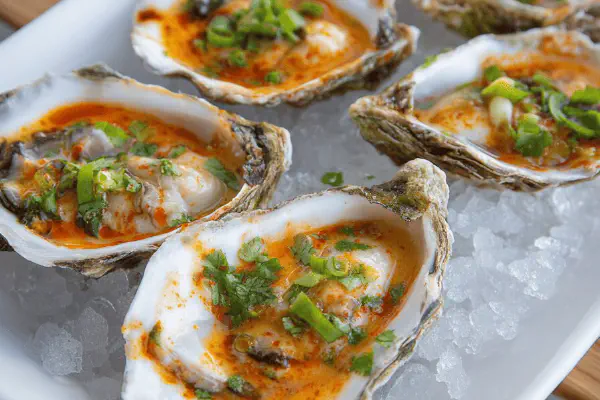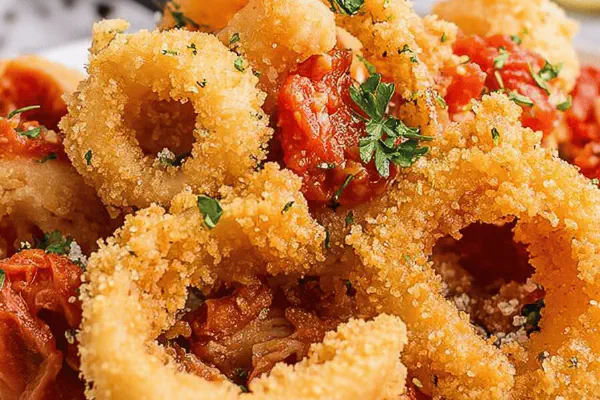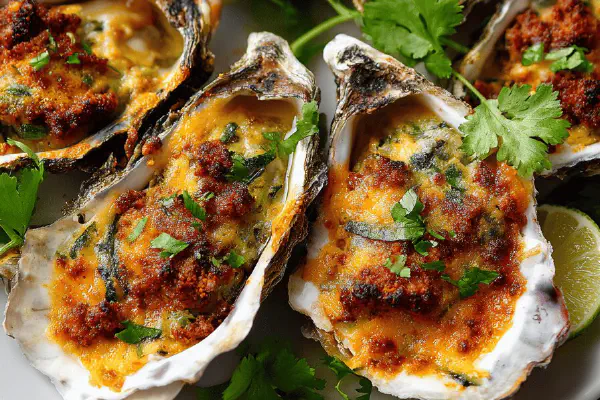Oysters Coconut Lemongrass

By Emma
Certified Culinary Professional
Ingredients
- 180 ml coconut milk (about 3/4 cup)
- 50 ml sour cream (a bit less than 1/4 cup)
- 10 ml fish sauce (2 teaspoons)
- 2 limes finely zested and juiced
- 1 stalk lemongrass roughly chopped
- 1 small scallion roughly chopped
- 1 small piece fresh ginger about 1/2 inch peeled and halved (substitutes garlic)
- 1/2 bunch coriander roughly chopped
- Crushed ice or fresh snow
- 24 oysters scrubbed and rinsed
About the ingredients
Method
- Blend coconut milk, sour cream, fish sauce, lime zest and juice, lemongrass, scallion, ginger, and coriander on high for about 1 minute until vibrant and fragrant. Should smell sharp and grassy with creamy acidity.
- Strain sauce through fine sieve set over bowl, pressing lightly. Discard solids or compost them. Texture needs silky finish, no chunks.
- Fill large serving tray with crushed ice or snow that’s cold but won’t water down oysters.
- Shuck oysters, freeing the meat but keeping them in half shell. Arrange on ice promptly to keep chill locked in. Be careful not to tear muscle.
- Serve with sauce on the side or spoon little amounts atop oysters. Drink spills should be caught by ice, not shells.
- Taste sauce before serving. If too tart add a pinch sugar or more sour cream to round acidity. If flat, extra splash fish sauce amps umami.
Cooking tips
Chef's notes
- 💡 Blending at full power bursts flavors fast. Stop before sauce heats up or buzz dulls. Listen for smooth hum not chunky thuds. Overblending kills brightness; no heat means zing stays alive. Grinding lemongrass finely is key; bruise tough stalks first with knife back to release oils locked inside. Small ginger piece swaps garlic punch with gentler heat. Fresh lime zest needs fine grating for bitter oils but avoid too much pith; adds herbal zip not bitterness.
- 💡 Strain sauce through fine mesh sieve gently. Press solids with light hand to avoid grassy bitterness sneaking in. Texture is everything—silky cold finish, no fibrous chunks or grainy bits. Scoop sauce immediately into chilled bowl. Keep sauce cold and covered till serving. Room temp kills snap. Coldness traps aroma; bite into oysters with chilled sauce, they slap briny and zingy on tongue. Don’t rush straining—it waits for layering contrast.
- 💡 Buy oysters fresh, tightly closed shells only. Tap open shells—if they don’t close, toss out dead ones. Shell cracks invite taste off and watery bite. Rinse shells quickly with cold water after shucking to remove grit but avoid spilling juice. Use crushed ice or fresh snow for chilling. Ice bed is a stage—keeps oysters locked cold. Avoid melting ice puddles which water down sauces and oysters, dull mouthfeel instantly.
- 💡 Adjust sour cream sparingly. Too much dulls edge. I dialed back slightly after testing. Cream should smooth acidity without clogging lightness. Fish sauce varies huge by brand; add little at a time, taste often. Can swap with tamari for umami without fish if needed. Lime zest and juice balances sauce but watch sour creep. If too tart, pinch sugar rounds quickly, but don’t sweeten up or lose sharp herbal bite.
- 💡 Serve sauce on side or dollop small spoonfuls on oysters. Sauce must stay cold; warm sauce flattens sharpness fast. Guests can add sauce to taste—gives control over boldness. Timing is critical. Shuck oysters right before serving to avoid drying or warming. Listen for quiet pop when knife slips. Handle shells gently to avoid breaking muscle. Cold skin on fingers snaps on touch if oysters fresh. Keep quiet—sudden smells grab attention; sea salt air trapped on tongue signals freshness.
Common questions
How to replace garlic?
Use fresh ginger about half inch piece peeled and halved. Gives milder, cleaner heat. No harsh bite or lingering burn. Works well with lime oils and lemongrass herbal notes. A few thin slices or chunks blend smoother than crushed garlic here.
What if sauce too bitter?
Check lemongrass amount first. Stems too fibrous add bitterness. Bruise and chop fine or reduce quantity. Also avoid zest pith - white part bitter. Strain thoroughly to remove tough fibers. Pinch sugar helps smooth edges but don’t mask acidity. More sour cream softens sharpness but watch texture change.
Can I prepare sauce ahead?
Sauce keeps 6-8 hours max chilled. Best freshly blended then strained just before serving. Ingredients degrade and dull fast. Keep covered in fridge, stir gently before use. If sauce thickens, whisk lightly with cold water or squeeze extra lime juice to revive brightness.
How to store oysters leftovers?
Keep in fridge on crushed ice if possible, covered with damp cloth. Best eaten within 24 hours or risk flavor loss and texture decline. Avoid airtight containers; oysters need fresh air. Don’t wash before storing to keep natural brine intact. Inspect shells for cracks or open shells before reuse.



